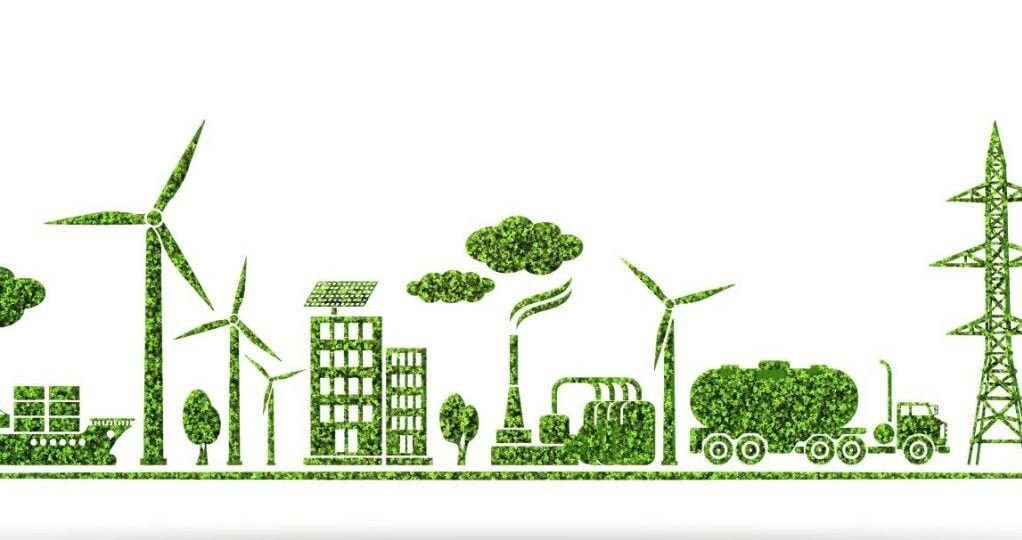As net-zero has risen up the agenda, Irish businesses have come to ask questions about their IT energy use. We look at the practical path to sustainability, including how the cloud can drastically cut emissions.
Commitment to meeting sustainability targets has significantly risen up the corporate agenda in recent years. Taking a lead from both public opinion and policy shifts, enterprises have committed to reducing energy use and carbon emissions as well as seeking to reassure investors by demonstrating viable strategies through developing environmental, social and governance (ESG) policies.
In a competitive marketplace, businesses realise they need to seize any edge they can, and sustainability is about more than marketing an enterprise as green. This year’s energy price hikes have underscored the negative impact of unoptimised processes, creating costs not only reputationally but directly having an impact on the balance sheet.
And yet many businesses find themselves unready. Faced not only with an alphabet soup of competing standards and regulations, sustainability itself can be something of a moving target with shifting demands placed on the industry as the political goals grow. Paradoxically, this can result in slowing moves to improve sustainability – even in the face of the government planning to reduce emissions nationally by 51% by 2030 and for Ireland to become carbon neutral by 2050.
Unsurprisingly then, all of the research suggests that, despite plenty of goodwill, Irish businesses are lagging. Indeed, a recent survey published by Microsoft found that Irish businesses are underprepared for the net zero future.
Commissioned by Microsoft and carried out by University College Cork (UCC) Sustainable Futures, ‘Sustainability Transformation: Assessing the Readiness of Irish Businesses’ set out to understand the level of business preparedness for a sustainable, net zero future and includes a national survey of 380 SMEs and larger enterprises across a range of sectors. The news is not good.
The survey found that 19% of businesses are yet to start their sustainability journey, with a mere 9% considering themselves to be truly sustainable. Meanwhile, some 20% of businesses surveyed said they had no set commitments or targets relating to sustainability issues, while three in five businesses said they had, thus far, not created a sustainability policy or strategy.
Leadership is also lacking, the survey found, with businesses failing to make sustainability a core part of operations: 69% of respondents said they did not have an individual whose role in the business was to develop and implement a sustainability strategy. Two-thirds of Irish businesses polled said they lacked advanced skills in the area.
The upshot of this is that, overall, only 22% of Irish businesses have committed to a net zero target.

The problem and the answer
While sustainability policy can be developed to encompass the entirety of business operations at the same time, the demand for computing power and its associated energy consumption is constantly increasing. Therefore, one key area that businesses need to address is power consumption. With ongoing digital transformations driving more and more computing, power consumption, and therefore emissions, continue to rise.
More generally, recent bad press around data centres has clouded the issue. While it is true that data processing and storage do, of course, consume electricity, the digital services that are consuming this power, from banking to healthcare to government and even arguably more frivolous activities such as streaming and social media, are now absolutely central to our lives.
However, data centres are not only essential for modern business and life in general; they are also when used correctly, able to reduce emissions produced by IT systems. In fact, the cloud in particular has the potential to drive genuine efficiency in computing and storage. Indeed, a 2021 forecast from analysts from International Data Corporation (IDC) said that cloud adoption could prevent the emission of more than 1 billion tonnes of carbon dioxide from 2021 through 2024. Research conducted by TEKenable, meanwhile, found that moving on-premise applications to the cloud can create up to 98 per cent reduction in carbon emissions.
Think of it this way: the ultimate goal of cloud adoption is serverless computing. In fact, servers will not go away, but infrastructure as a service (IaaS), platform as a service (PaaS), and software as a service (SaaS) are each a step further away from running services on dedicated hardware.
Principally, then, reductions are achieved because the increased level of abstraction means the hardware is only run when it is actually required. This has been the direction of travel for some years, with virtualisation being more efficient than running applications on bare metal, but the cloud means going several steps further: when correctly architected and implemented, the cloud significantly reduces compute resource usage and can eliminate idling.
Five steps to sustainable cloud
- Understand your IT estate
Before jumping into a cloud re-architecting process, the first step is to understand your current IT usage as well as your actual needs. Which systems and processes are most suitable for re-deploying in the cloud? Which will require re-architecting? Can any systems or even processes be retired entirely? What new, advanced services will make your business more efficient? In practical terms, this will help with evaluating your computing, storage and bandwidth need when it comes to moving to the cloud.
2. Understand the Cloud
Setup and configuration are essential with cloud computing. Excessive cloud use will not only cost money, but it could also eliminate carbon emission savings. However, there are tools, such as Microsoft Cloud for Sustainability, available out of the box. You or your partner should ensure that your cloud is configured to meet your sustainability and energy consumption goals.
3. Know your Cloud Provider
Equally important is knowing what your particular cloud provider should be delivering. Directly ask them about their sustainability commitments and goals, including reducing energy use and using renewable energy sources. Then, find out what their key benefits are. Azure Storage, for example, promises it is 79% more efficient than traditional data centre storage.
4. Rightsize your operations
As you make the transition away from on-premise infrastructure, consider if you can turn off unnecessary, unused workloads, introduce autoscaling and rightsize your use. In order to achieve this, migration should not be a case of simply ‘lifting and shifting an existing application to the cloud. Instead of paying for unnecessary computing or bandwidth, proper provisioning will eliminate wasted cycles, and hence reduce energy use.
5. Use on-demand practices and eliminate idle processing
Congratulations! You have moved to the cloud, but this is not the end. Once your operations are in the cloud is it essential to continue to match consumption, whether measured in electricity or computing. Again, this is a matter of configuration and you or your partner or provider. Properly optimised microservices and intelligent resource allocation will have an impact on energy use, and compute costs, so it is important to ensure that they are considered.
Author: Jason Walsh





